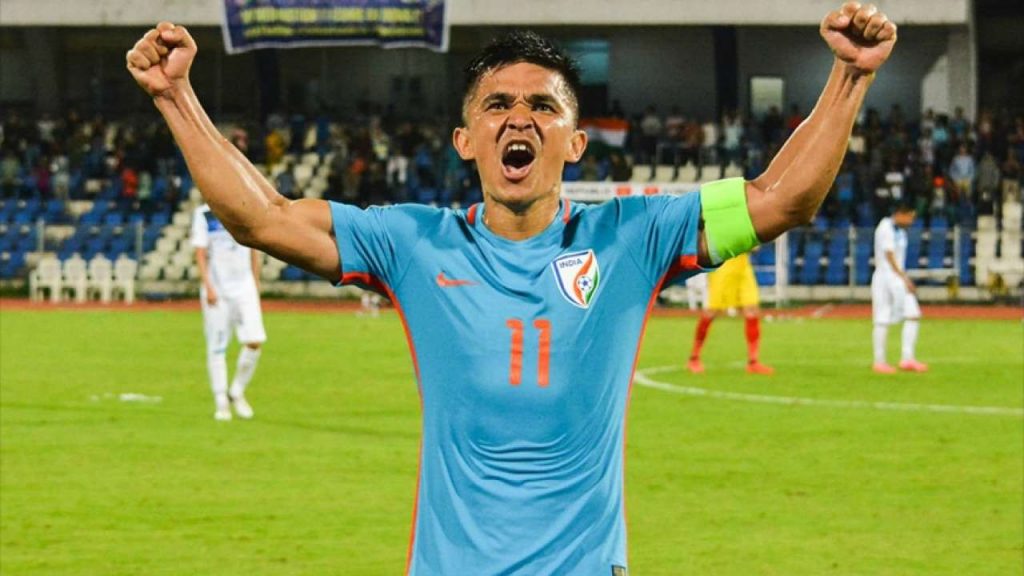New Delhi: The national team’s performance is often a fair reflection of any sport’s growth in a country. By that yardstick, it won’t be an exaggeration to say that Indian football has regressed in recent times. The signs are clear that Indian football is slowly going downhill if one assesses the performance of the national team in the ongoing SAFF Cup.
The solitary-goal win Sunday over Nepal is an aberration in an otherwise hopeless run marked by the team’s inability to eke out victories. India failed to win their first two games by teams much lower in FIFA rankings.
India have won the SAFF Cup a record seven time. However, in this edition India found themselves on the verge of being knocked out. It happen after two successive draws against lower-ranked Bangladesh and Sri Lanka.
The struggle for survival in the regional event tells a lot about which direction the team is headed. Perhaps, even the win against Nepal wouldn’t have come, had it not been for Sunil Chhetri’s 82nd minute strike. In the process Chhetri equalled Pele’s feat of scoring 77 goals for the country.
It is true that alongside the national team’s graph, a solid youth development programme and a vibrant and competitive league structure, is equally important towards developing the sport in a holistic manner.
However, with the men’s team hitting the lowest of lows in the SAFF tournament in Maldives, the senior side and its head coach Igor Stimac have come under the scanner.
But before the powers that be of Indian football try their hands at resuscitating it from its present moribund state, they would do well to do two things: shun their top-down approach for a bottom-up policy, and recall former head coach Bob Houghton’s scathing observation.
The All India Football Federation’s (AIFF) top-down approach, which involved bidding for FIFA events, hosting them amid much fanfare, and basking in their organisational success, appears to have failed miserably in raising the standards of the national team of a country that has been showered with sobriquets such as ‘sleeping giants’ and ‘passionate giants’.
This method, in fact, was never meant to do any good. On the contrary, the national team’s performance has dipped since the administrators trained their guns on bidding for, and organising, big tournaments on a priority basis.
“Youth development and only youth development is the way to go,” said Shaji Prabhakaran, who has worked for years in the AIFF, besides being involved with FIFA and South Asian football.
“Top-down approach cannot work in isolation; it is helpful only in creating enthusiasm. The priority should be youth development,” asserted Prabhakaran, who currently heads Football Delhi, the sport’s governing body in the national capital.
As a head of an affiliated state unit, Prabhakaran urged the AIFF to engage more with all the stakeholders. Everything is centralised now, and the state units are becoming weaker and weaker.
“Ten years ago that was not the case, states were a part of the whole process. There is no holistic way of looking into the problems (now). Without resources we were doing better earlier because they were working as one, now there is no team work, we have never had meetings on football development, there is no dialogue,” pointed out Prabhakaran.
Thoughts of reaching the heydays of the 1950s and 60s – when India won two Asian Games gold medals besides competing in the Olympics – seem far-fetched at the moment.
The story was also different some years ago. Under Houghton, the team won three tournaments beating respectable sides such as Syria and Lebanon, besides qualifying for the AFC Asian Cup after a gap of 24 years.
Then there was that record unbeaten run under Stephen Constantine, which also led to an Asian Cup qualification.
And then came the slide.
Constantine’s successor, Stimac has come under criticism in recent times for his approach that has not yielded results, but he is neither the problem nor the solution.
While the AIFF will have its say on the matter, simply getting rid of the coach will amount to nothing if the more pressing issues are not addressed.
About two years before his unceremonious exit in 2011, a miffed Houghton had remarked: “You can remove the coach and you can bring Guus Hiddink or Jose Mourinho tomorrow and you will still be (ranked) 140 (then).”
More than 12 years ago, Houghton’s frustrations were aimed at those in charge of football in India.

